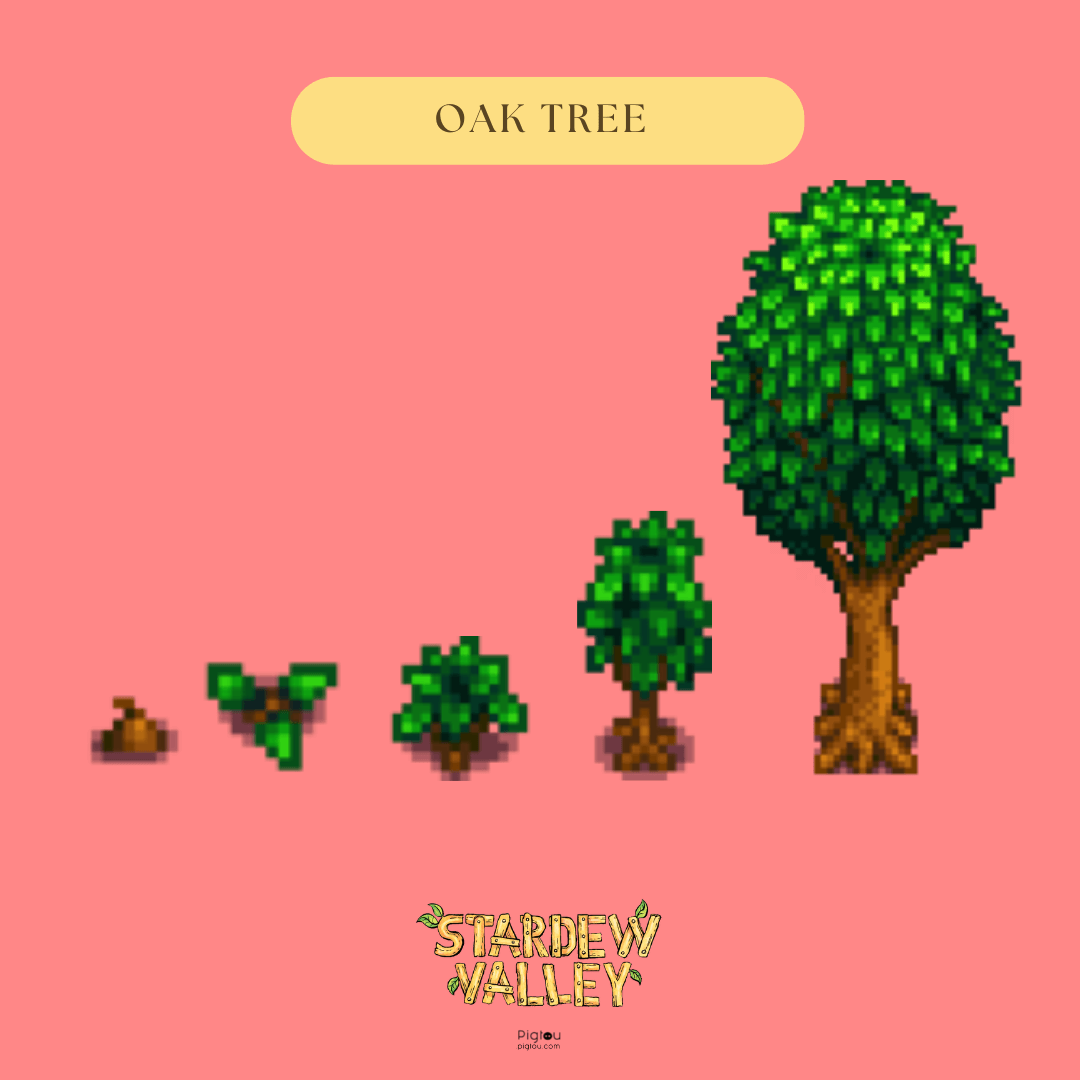Are you ready to start planting trees in Stardew Valley, but unsure if Oak Trees are a good choice? This article will explain why Oak Trees are a great option, when and how successful players use them, and other important details you need to know.
Oak Trees in Stardew Valley
Oak Trees are one of six non-fruit trees in Stardew Valley. They grow through four stages until they reach maturity at stage five. Stage four takes twice as long as the other stages, but there are ways to speed up the growth process.
Oak Trees can be planted, tapped, shaken for seeds, or chopped down in all locations inside and outside the farm, except for Pelican Town.
What do Oak Trees Look Like?
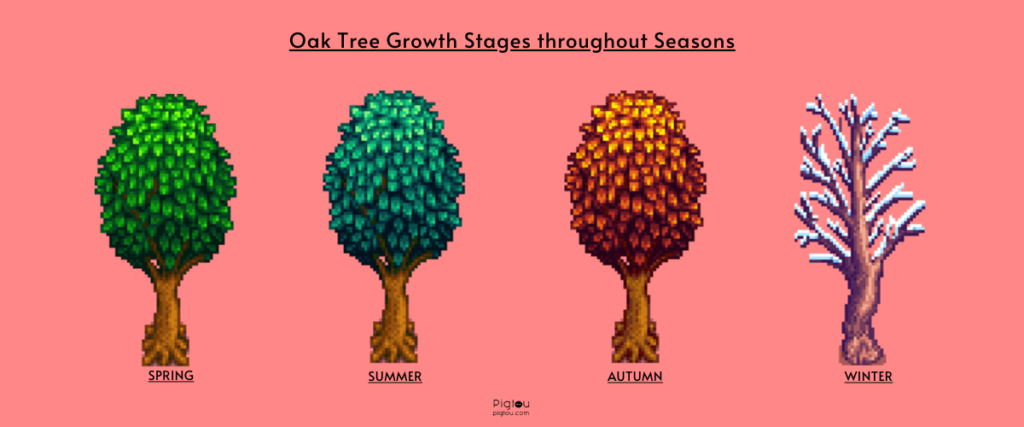
As previously mentioned, Oak Trees grow through four stages and reach maturity at stage five. You can see the appearance of each growth stage in the picture below.
Once Oak Trees reach maturity at stage five, their appearance changes during the seasons. In spring, Oak Trees have vivid green leaves, in summer the leaves are green with a blueish hue, in autumn the leaves turn orange-brown, and in winter there are no leaves.
When cut down or hit by lightning, Oak Trees turn into stumps that look the same during spring, summer, and autumn, but the stumps get snowy during winter.
If you’re still unsure if your tree is an Oak Tree, you can check the seeds dropped by the tree. Sometimes, the trees drop seeds that regrow into mature trees over time. If the dropped seeds are acorns, your tree is an Oak Tree.
Alternatively, you can shake or cut down one tree to see the dropped seeds. Acorns mean you have an Oak Tree, maple seeds or hazelnuts mean you have a Maple Tree.
Oak Trees vs Maple Trees During Seasons
Many players find it challenging to identify Oak Trees and Maple Trees, as they look almost identical during stages 1-4 and when cut down. However, you can easily identify your trees when they are mature.
Again, you can shake the tree and check what seeds are dropped. Oak Trees drop acorns while Maple Trees drop maple seeds or hazelnuts (during the last two weeks of fall).
Oak Trees vs Maple Trees in Spring
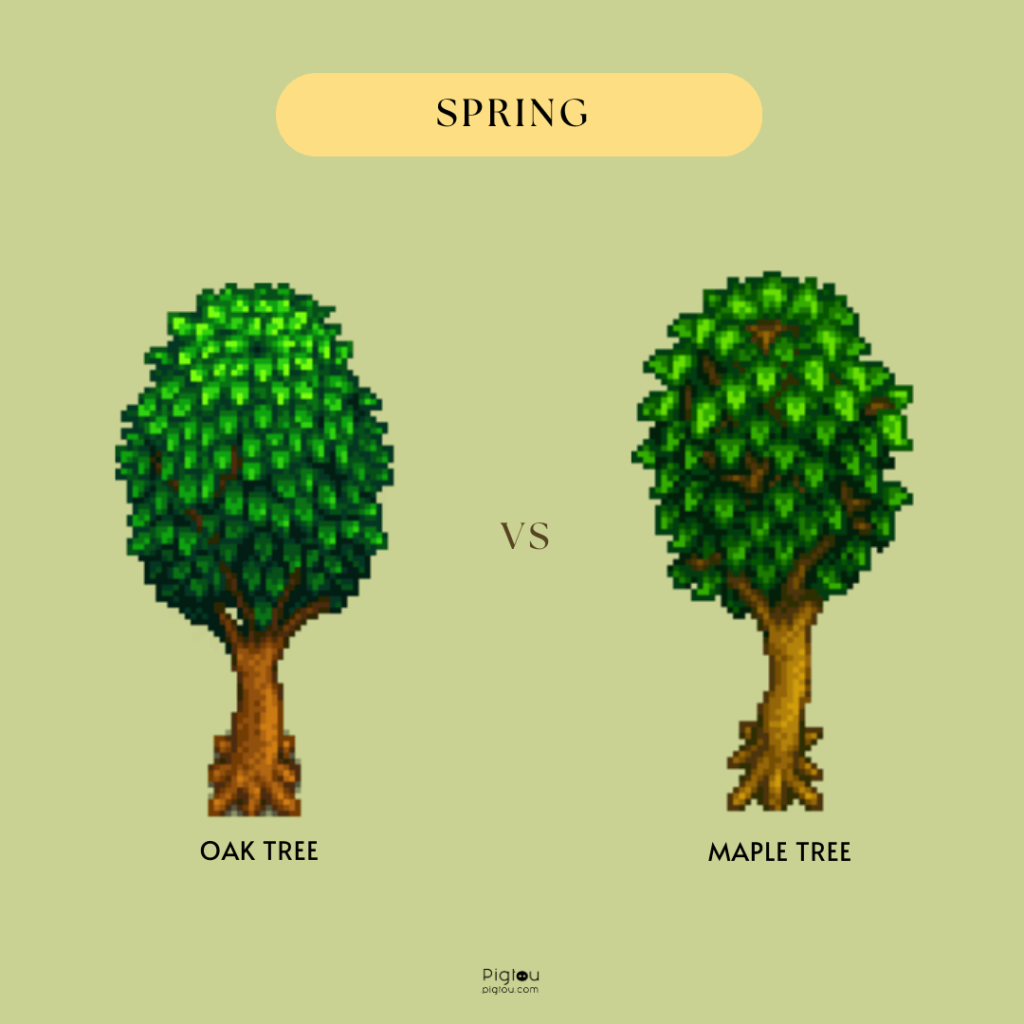
During spring, Oak Trees have slightly smaller leaves that are the same green color as Maple Tree leaves. Oak Trees have smaller and less highlighted roots than Maple Trees.
However, the easiest way to identify Oak Trees in spring is by checking if there is a gap between the trunk and where the leaves start.
Oak Trees vs Maple Trees in Summer
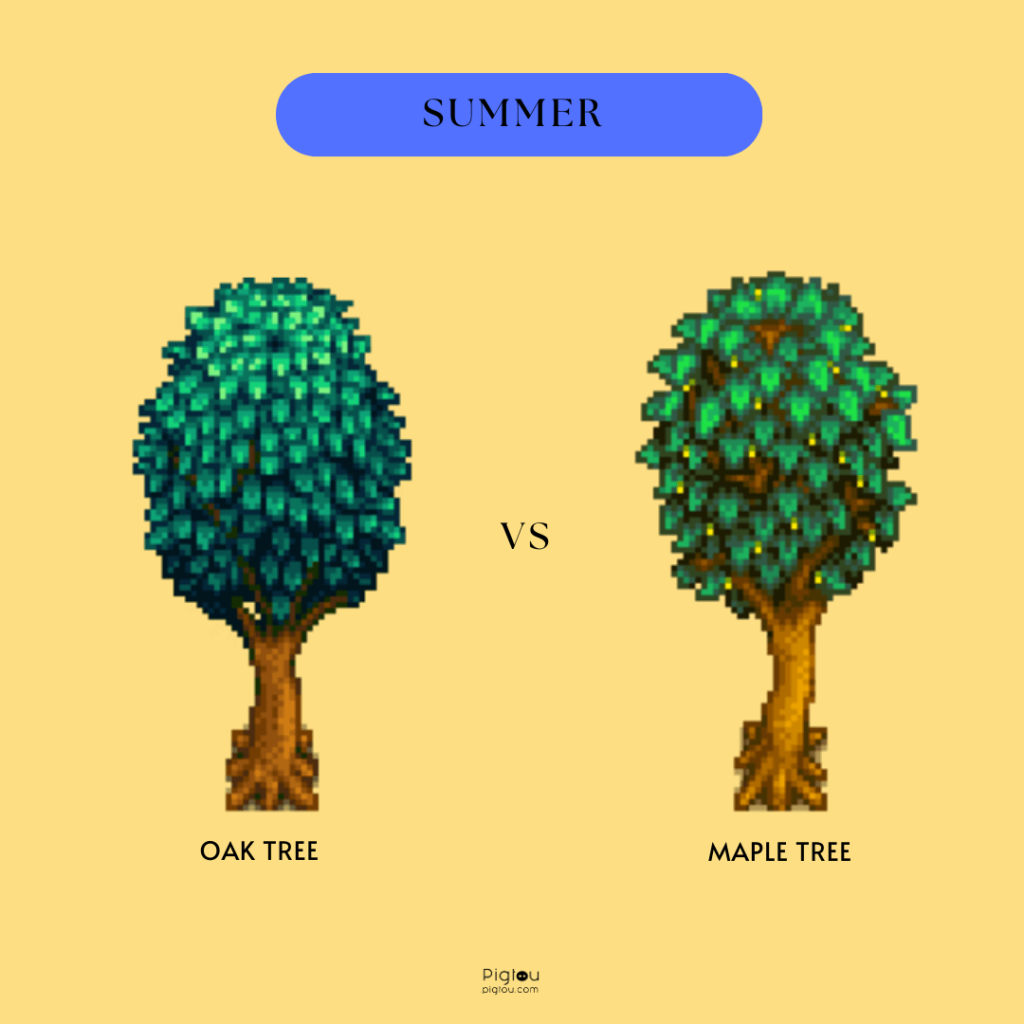
Identifying trees in summer is easy. Maple Trees have little yellow flowers while Oak Trees do not. The rest is the same as in spring, only the leaves have a blueish hue that is identical on both trees.
Oak Trees vs Maple Trees in Autumn / Fall
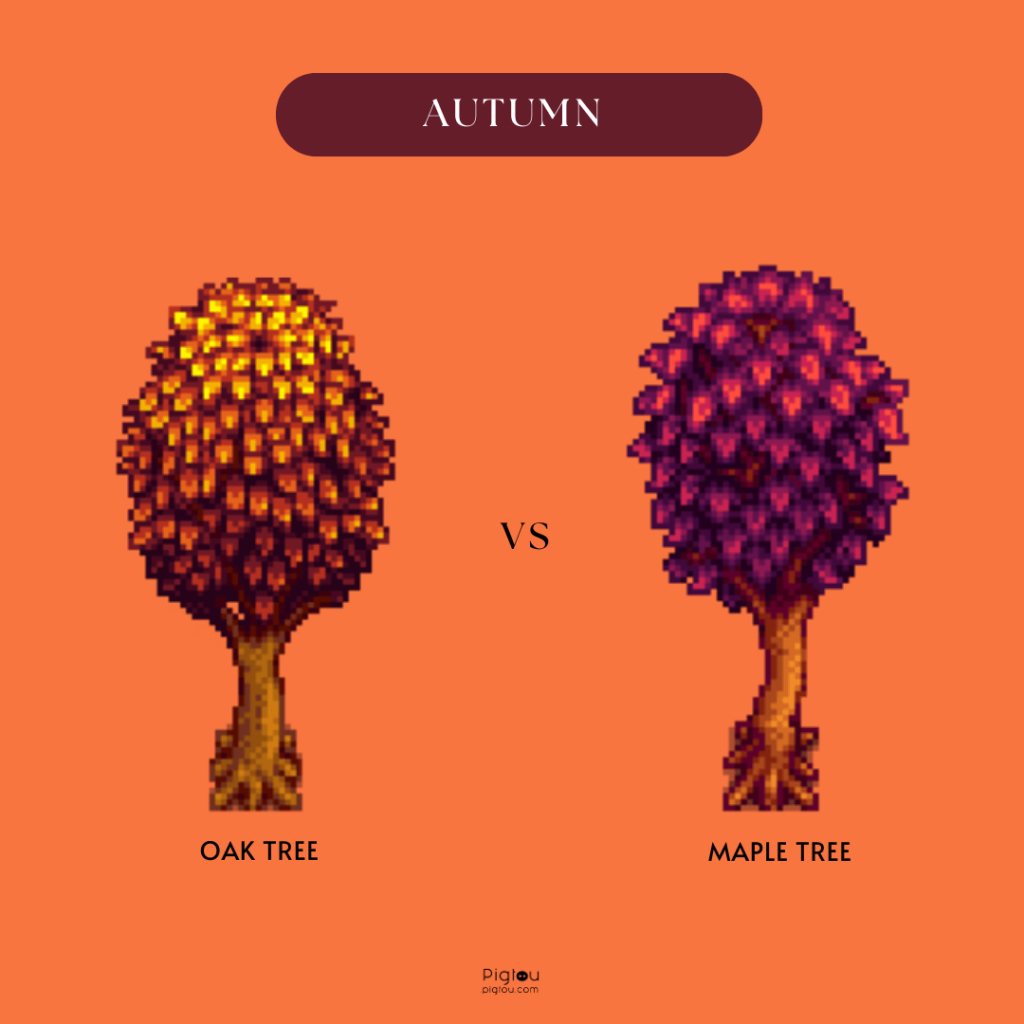
I usually differentiate trees by leaf color in autumn. Oak Trees turn orange while Maple Trees turn purple. Super easy!
Oak Trees vs Maple Trees in Winter

Finding differences in winter is slightly trickier. There are no leaves, and the colors are identical on both trees. However, the trunk is slightly thinner and more divided on a Maple Tree.
Building an Oak Tree Farm
If you want to build an Oak Tree farm to get resources like wood, oak resin, sap, acorns, hardwood, and kegs, here are a few recommendations:
- Put tappers on existing Oak Trees – you can put tappers on trees on and off your farm, except for Pelican Town
- Fertilize the soil with tree fertilizer – this will guarantee one growth stage per night or two nights from stage four to maturity
- Use optimal spacing – I discuss this in detail in the spacing section below
- Synchronize your on-farm with off-farm harvesting schedule – this will help you keep track of which trees are ready to be harvested, saving you tons of time
Oak Tree Tapper in Stardew Valley
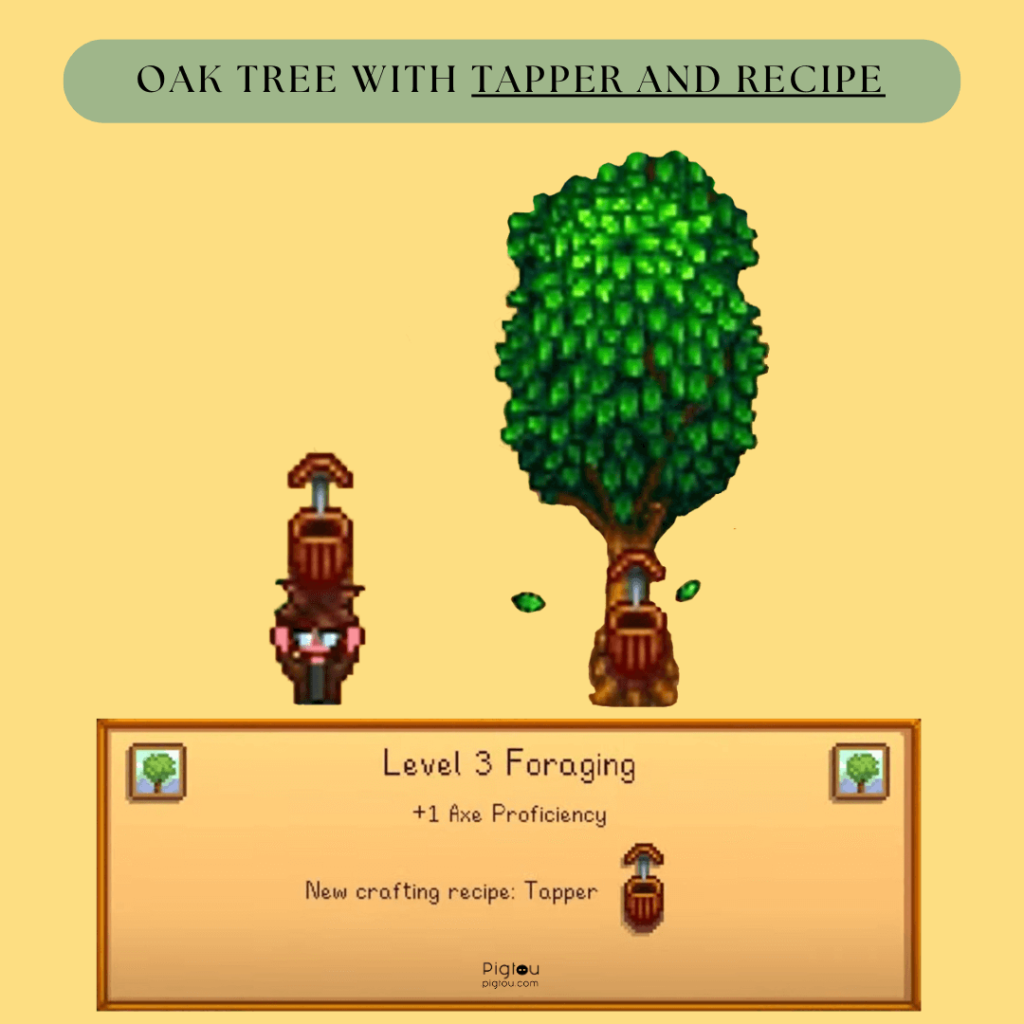
To acquire extra resources on a regular basis, you can use tappers on your trees, both on and outside your farm, excluding those in Pelican Town. Oak trees, in particular, can provide oak resin every 6-7 days, which is valued at 150g.
There are two types of tappers: light and heavy. Both can be crafted using a recipe found under the Crafting tab in the game’s menu. The heavy tapper became available in the 1.5 update.
The light tapper can be crafted using 40 wood and 2 copper bars, but you need to have reached Foraging Level 3. It extracts one oak resin every 6-7 days.
The heavy tapper requires 30 hardwood and 1 radioactive bar. Its recipe can only be purchased from Mr. Qi’s Secret Walnut Room on Ginger Island for 40 Qi gems. The heavy tapper extracts one Oak Resin every 3-4 days.
To place a tapper on a tree, simply hold the tapper and walk up to the tree, then place it on the square occupied by the base of the tree.
If you want to save on time and energy, synchronize your on-farm with off-farm trees. When your farm trees are ready to produce, you’ll know the rest of the trees in the forest and other off-farm locations are ready also, so you don’t waste time collecting oak resin every single day.
To collect oak resin, simply walk up to the tree and harvest it like you would any crop. Hitting the tapper one time with an axe will remove it and return it to your inventory.
Resources You Can Extract from Oak Trees
Oak Trees offer a variety of resources that can be obtained through shaking, cutting down, or tapping the tree. Many players use Oak Trees to craft kegs, which are used to produce high-value goods like wine.
Oak Resin
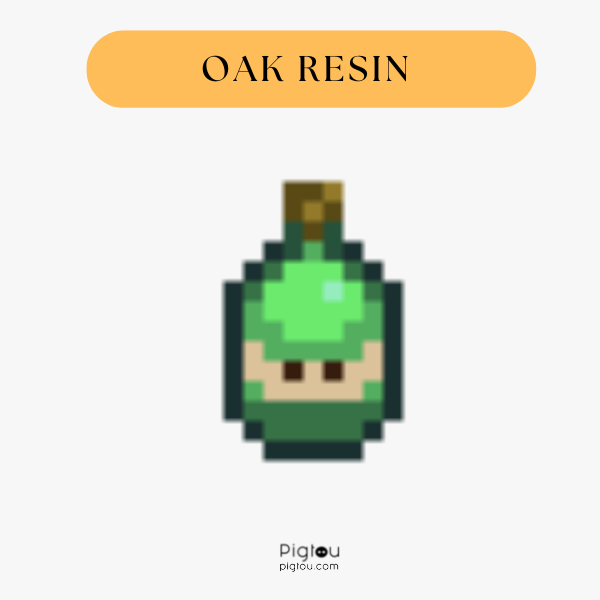
Oak resin can be obtained by fitting a tapper on an Oak Tree. A light tapper provides one oak resin in 6-7 days, while a heavy tapper reduces this time to 3-4 days.
Oak resin is an essential material for crafting kegs, but it can also be sold for 150g or 187g if you have the tapper profession. Tapping Oak Trees is the most efficient way to obtain oak resin, as it is not commonly found in the travelling cart.
Wood and Hardwood. Should You Cut Down Oak Trees?
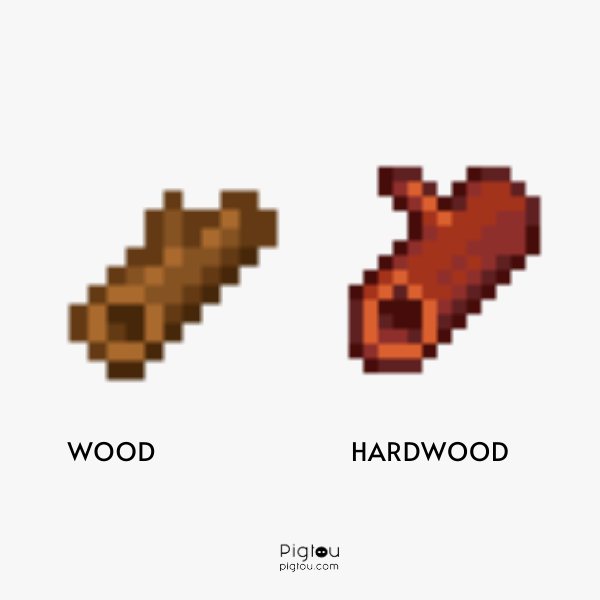
You can cut down Oak Trees at different stages to obtain different resources.
The resources you will get based on the stage of the tree are:
- Stage 1 – you’ll get your acorn back
- Stages 2 and 3 – you’ll get one piece of wood
- Stages 4 – you’ll get 4-5 pieces of wood
- Stage 5 (mature tree) – you’ll get 12-16 pieces of wood along with 1 sap and possibly 0-2 acorns
- Stump – you’ll get 4-11 pieces of wood depending on your luck, Foraging skills and profession
- If your profession is Lumberjack, you also have a chance to obtain hardwood from cutting down Oak Trees. The chance to get hardwood is 50% for 0, 25% for 1 and so on.
Some successful players suggest keeping common trees until you craft enough kegs, then you can use the gold to buy wood, and the space can be used for something else.
Sap
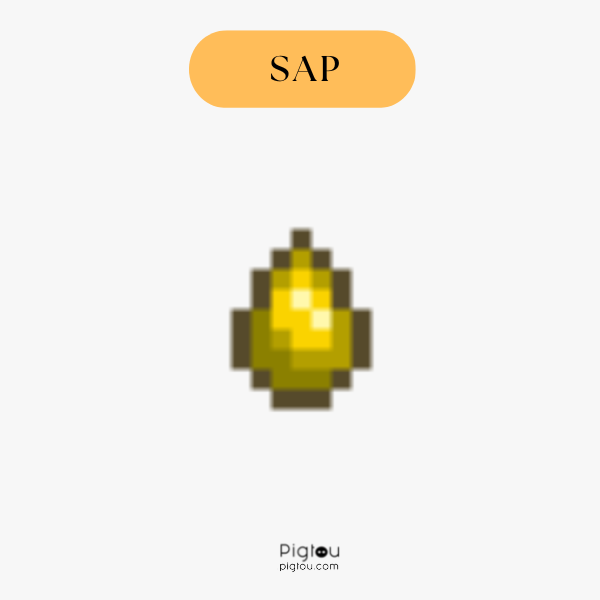
Sap can be obtained by cutting down a mature Oak Tree with an axe. Although the selling price of sap is low (only 2g), it is used in various crafting recipes. One common use for sap is to craft fertilizers that speed up the growth of your crops. Note that tree fertilizer, which speeds up the growth of your trees, does not require sap, only 5 stones and 5 fibers.
Acorns
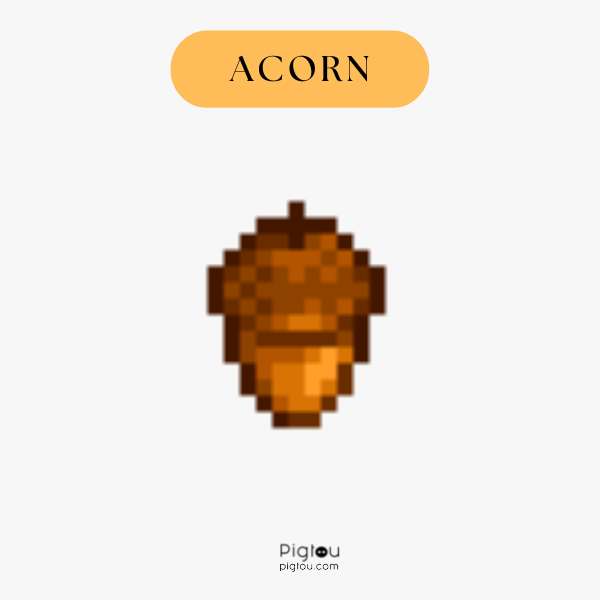
Shaking or cutting down a mature Oak Tree can yield between 0 and 2 acorns, which can be sold for 20g or used for planting new Oak Trees or crafting field snacks.
Kegs

Kegs are used for crafting high-value goods like beer, pale ale, wine, and others. To craft one keg, you need 30 wood, 1 copper bar, 1 iron bar, and 1 oak resin. Products crafted in kegs can be aged in casks to increase their value further, giving you more gold in the long-term. Casks do not require oak resin, only 20 wood and 1 hardwood.
As an example, you can craft one wine in 7 days in a keg. Wine can be sold for 3x the fruit base price. For instance, if you make apple wine, your wine will sell for 100g (apple base price) x 3 = 300g. And if you age your apple wine for 56 days until it reaches Iridium Star quality, you can sell your wine for (3x fruit base price) x 2 = 3x 100g x 2 = 600g per bottle of apple wine.
This value increases even more if you use ancient fruit, which has a base price of 550g, resulting in a selling price of 3300g for a bottle of aged ancient fruit wine. And if you have the
Artisan profession, your goods will sell for 40% higher price, resulting in a selling price of 4620g for one bottle of aged ancient fruit wine.
We recommend building a second shed just for kegs, they are a super-efficient way to add space for processing machines.
How to Grow Oak Trees in Stardew?
I’ve prepared a few recommendations and even some examples on how to grow your Oak Trees from seed to mature plant, and maximize the resources it gives while spending minimal time collecting them.
Obtaining Oak Tree Seeds
Oak Tree seeds, also known as acorns, can be obtained in various ways:
- Shake mature Oak Trees for a chance to get 0-2 acorns per day
- Cut down mature Oak Trees to get 0-2 acorns
- Chop down Oak Trees in their first stage (planted acorn) to get 1 acorn
- Find acorns in garbage cans
- Purchase acorns from the Traveling Cart for 100-1,000g
Best Locations for Planting Oak Trees
Oak Trees can be planted, tapped, shaken for seeds, or chopped down in most locations in the game, with the exception of Pelican Town. Some recommended locations include:
- Your farm
- Cindersap Forest
- The Mountain
- The Railroad
- The Quarry
- The Bus Stop and Backwoods
- The Bus Tunnel
- The Train Station and surrounding Railroad areas
- Robin’s house
- The Desert
- The Island by Leah’s house
- The land south of the Ranch
- Inside the Mines
- The Spa area
For advanced players, the Desert is a great location for planting Oak Trees due to its large open space. Additionally, planting Oak Trees around the Bus Stop can save time as you pass by often in the early game.
Another strategy is to plant Oak Trees and fit tappers along the Mountain path that leads to Robin’s house, leaving the rest of the forest available for cutting down for wood.
Optimal Spacing for Oak Trees
Proper spacing is crucial for Oak Tree growth. Unlike fruit trees, Oak Trees do not require empty space around them, but there should never be two mature trees side by side. Each Oak Tree should have at least one empty tile (8 total) around it.
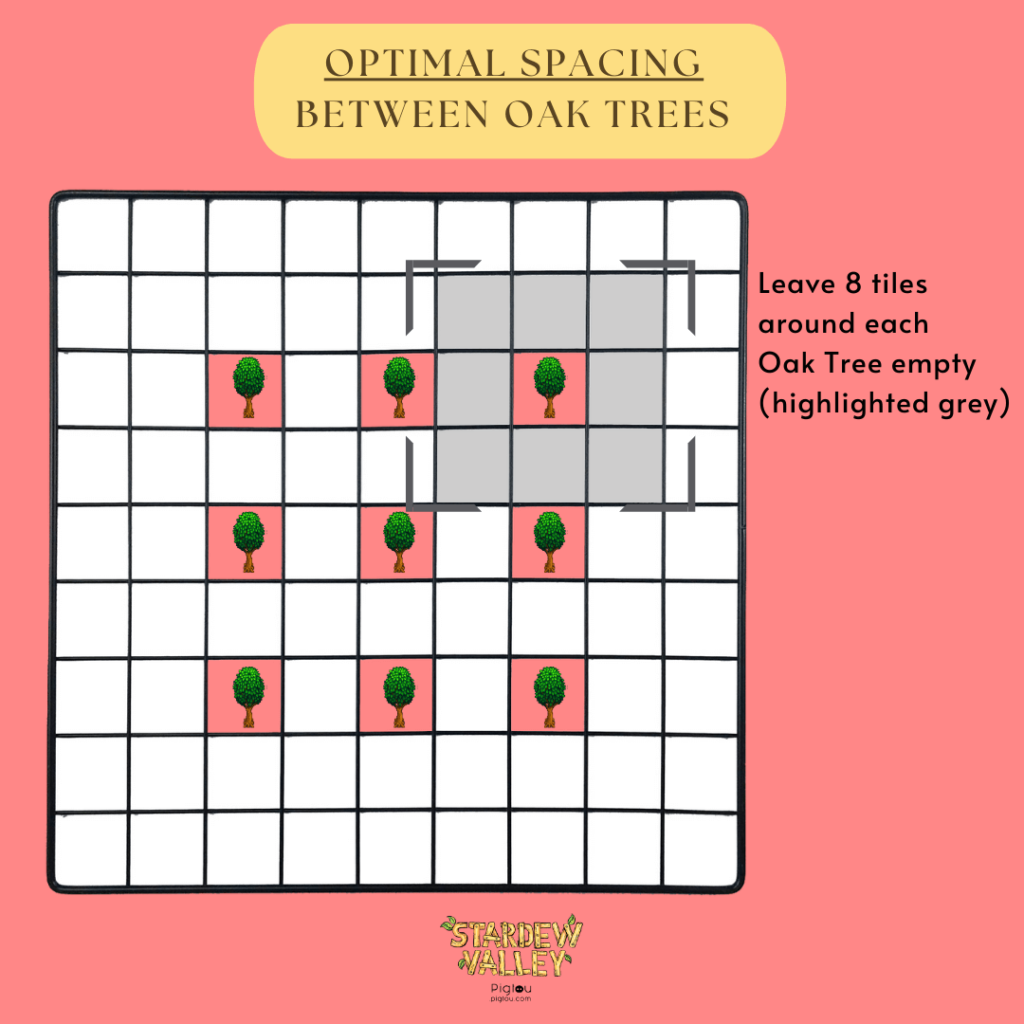
Additionally, the chosen tile for planting an Oak Tree must be empty and not on top of paths or crops.
Sometimes mature trees are able to plant one seed in any direction 3 tiles away from itself. To prevent spontaneous new Oak Trees from growing, players can place obstacles such as paths, crops, or decorations around the trees. Players can also create a grid pattern with flooring and empty holes every other space for seedlings to grow. That way every single tree can grow to full size and the flooring will prevent half-grown trees from blocking your movement between them.
Advanced players can leave two spaces between Oak Trees horizontally and one space vertically because the horse requires 1 space to move through horizontal spaces but 2 – for vertical spaces.
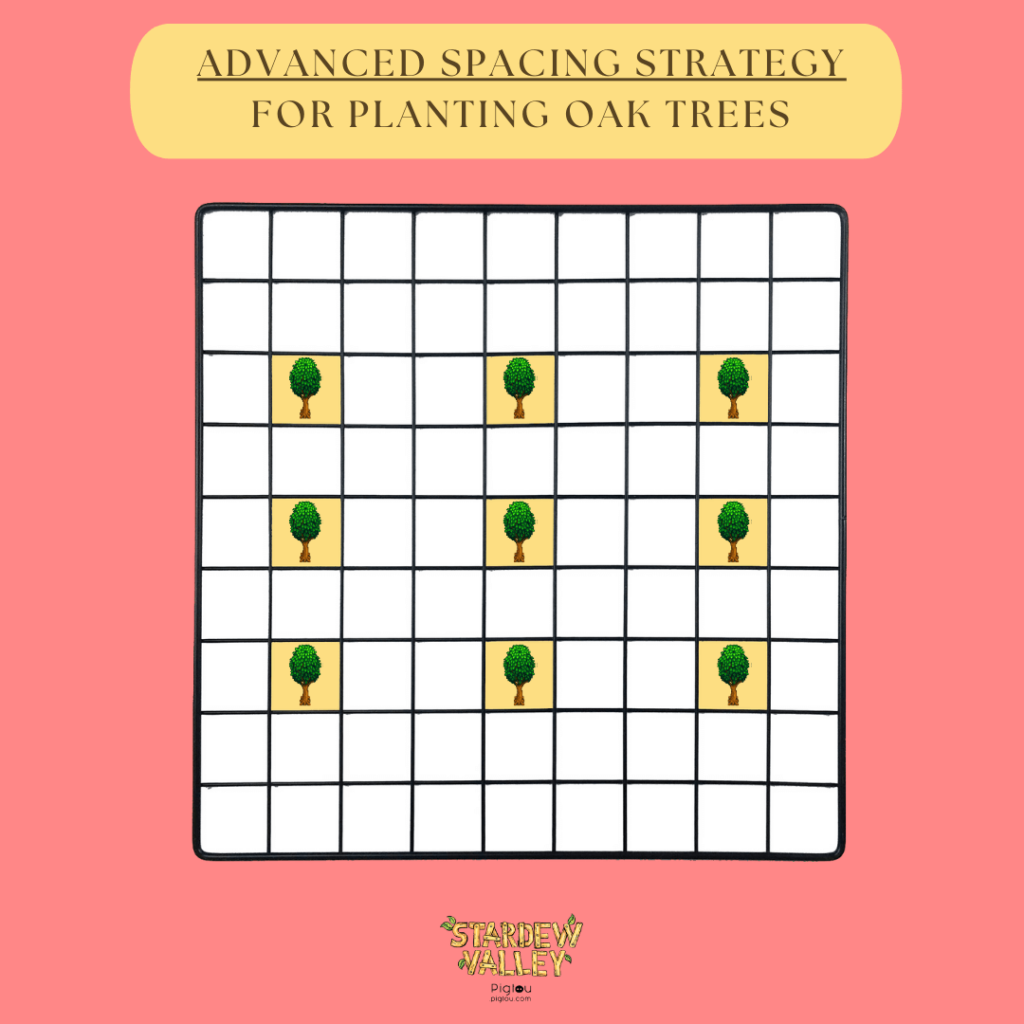
With such spacing strategy, you’ll lose 20% of space but will save a lot on time, you’ll be able to collect resources without having to get off the horse.
Oak Tree Growth Times
Oak Tree growth times can vary, with the median time being 24 in-game days. However, trees do not grow during winter. Typically, Oak Trees have a 20% chance to advance to the next stage overnight during stages 1-3 and a 20% chance to reach maturity (stage 5) from stage 4 in two nights.
To speed up the growth process, players can use tree fertilizer, which can be made from 5 stones and fibers. Pouring tree fertilizer on the soil will guarantee an advancement in stage overnight, except for stage 4 which will take 2 nights to reach maturity.
As for stumps, trees that are chopped down outside the farm and the stumps removed, there is a 1/5 chance for a new tree at stage 3 to reappear the next morning regardless of the season.
Struggling with Oak Tree Growth? Here’s What You Need to Know
Are your Oak Trees not growing as you expected? There could be a few reasons why. We’ll break down the common causes of Oak Tree growth issues and provide solutions to help you get your trees back on track.
Lack of Space
One of the main reasons Oak Trees may not be growing is a lack of space. It’s important to remember that two mature Oak Trees cannot be planted side-by-side. To ensure optimal growth, make sure to follow the spacing guidelines outlined in the article.
Bad Season
Another common reason for Oak Tree growth issues is the season. Trees do not grow during the winter season. Make sure to plant your Oak Trees during the appropriate seasons to ensure optimal growth.
Insufficient Time
Oak Trees have a 1/5 chance to stage up overnight. To speed up the growth process, consider using tree fertilizer, which can be crafted with 5 stones and 5 fibers.
Stumps
If you remove a stump, it will regrow into a stage 3 tree with a 1/5 chance. Keep this in mind when deciding whether to remove stumps from your farm.
Conclusion
Oak Trees can be a valuable addition to your farm, but they do require proper care and attention. By understanding the common causes of Oak Tree growth issues and implementing the solutions outlined in this article, you can ensure that your Oak Trees are healthy and thriving. Happy farming!
FAQs
No, it is not possible. In earlier versions of Stardew Valley, it was possible to put tappers on stumps, but updates have since removed this feature.

